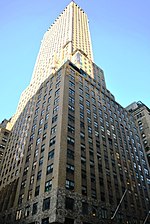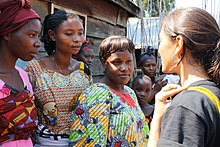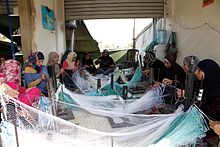The International Rescue Committee (IRC) was founded as the New York branch of the International Relief Association (which later combined with another relief organization) in 1931, at the suggestion of Albert Einstein. [7] As of 1933, the IRC was initially an organization that helped those who were fleeing Nazi Germany and as need arose it expanded its clientele.
Founding
The International Relief Association (IRA) was founded in 1931 in Germany by two left-wing factions, the Communist Party Opposition (KPO) and the Socialist Workers Party (SAP). Its purpose was to aid victims of state oppression and persecution. [8] After the Nazis took power in 1933, the organization moved its headquarters to Paris. [9]
The KPO consisted of the "right opposition" – communists who had been purged by Stalin in 1929 because of their support for Nikolai Bukharin. Among those purged was Jay Lovestone, the erstwhile head of the American Communist Party. It was Lovestone who formed an American section of the International Relief Association in 1933. Among those who joined him was Albert Einstein. Its purpose was to assist Germans suffering under Adolf Hitler's government – particularly supporters of the "right opposition". Later, refugees from Mussolini's Italy and Franco's Spain were assisted.
In 1940, European exiles and American liberals close to First Lady Eleanor Roosevelt, founded the Emergency Rescue Committee (ERC) to aid European refugees trapped in Vichy France. ERC founding member Varian Fry arrived in Marseilles within a few weeks of the fall of France, where he pulled together a small team that was instrumental in helping many individuals escape Vichy and the Nazis to safety in the U.S. and elsewhere. Over 2,000 political, cultural, union and academic leaders were rescued in just 13 months, ending when Fry was expelled by the Vichy French. Fry also worked closely with British intelligence, helping to establish escape routes for British servicemen. Fry also took a map showing the distribution of mines in the Mediterranean that he received from a refugee and gave it to an agent of British intelligence. [10]
In 1942, after the US entered the Second World War, IRA and ERC joined forces under the name International Relief and Rescue Committee, which was later shortened to the International Rescue Committee. [11] The organization was financed largely by the National War Fund. According to historian Eric Thomas Chester, by the 1950s the IRC had evolved into a global operation functioning as an integral link in the CIA's covert network, became deeply involved in the volatile confrontations between the two superpowers, and participated in an array of sensitive clandestine operations. [12]
Timeline
1940s
In the 1940s, IRC fed people during the Soviet blockade of West Berlin. [13] In 1945, at the end of World War II, the IRC initiated emergency relief programs, established hospitals and children's centers, and started refugee resettlement efforts in Europe. With the descent of the Iron Curtain in 1946, the IRC initiated a resettlement program for East European refugees, which continued until the end of the Cold War. [11] In the period immediately following the end of the Second World War, the IRC was one of several organizations aiding refugees from Eastern Europe. These refugees were screened to see if they had valuable information concerning the Soviet bloc countries. A select few were recruited to participate in covert operations being conducted by the intelligence community. [14] In 1949, the IRC took a significant step toward a greater integration into the covert network. The IRC distributed a confidential memorandum that it was prepared to take part in sensitive covert operations at the behest of the U.S. government. Only a select few within the committee would be told of these operations. From this point onward, the IRC would function on a two-pronged basis. There would be programs to assist refugees that would be transparent and, at the same time, there would be parallel operations known to only a few. [15]
1950s
In 1950, the IRC intensified its aid in Europe with Project Berlin, which provided food to the people of East Berlin amid increased Soviet oppression. After the war, the committee's European representatives focused on rebuilding the Social Democratic Party of Germany (SPD) as a bulwark against the Communists. [8]
Leo Cherne, an IRC board member since 1946, was elected IRC Chairman in 1951. He would hold the position for 40 years.
Also in the 1950s, the IRC began relief and resettlement programs for refugees displaced by the North Vietnamese defeat of the French and by the Soviet forces’ crushing of the Hungarian revolution. [11] According to historian Eric Thomas Chester, the IRC was instrumental in the establishment of two key Washington lobby groups supporting South Vietnam, the American Friends of Vietnam, and its successor, the Citizens Committee for Peace with Freedom in Vietnam. [16] [8]
1960s
In 1960, an IRC resettlement program began for Cuban refugees fleeing the Castro dictatorship and for Haitian refugees escaping the Duvalier regime.
IRC operations were extended to Africa in 1962 when 200,000 Angolans fled to Zaire. Also that year, the IRC began aiding Chinese fleeing to Hong Kong from the mainland. [11]
1970s
The IRC was active worldwide, providing support for refugees fleeing conflict and oppression in India, Chile, Paraguay, Uruguay, Guatemala, Cambodia, Laos, Vietnam, Uganda and the Soviet Union, while resettling refugees in the United States. [11]
1980s
At the turn of the decade, the IRC launched emergency relief programs for Afghan refugees fleeing to Pakistan. Eight years later, the IRC started community rehabilitation activities in Afghanistan for tens of thousands of returning refugees.
During the 1982 war in Lebanon, the IRC assisted Palestinian and Lebanese refugees.
Spanish Refugee Aid, which served the survivors of the Spanish Civil War in France, became a division of the IRC in 1984. That same year, the IRC initiated health and community development projects in El Salvador for displaced victims of the civil war.
Partnering with the Polish trade union movement Solidarity in 1987, the IRC began a health care program in Poland.
Relief programs to assist Mozambican refugees in Malawi also began in 1987. Eight years later, the IRC was in Mozambique helping with their return.
In 1989, the Women's Commission for Refugee Women and Children was established by the IRC as an affiliate organization whose purpose is to serve the rights and interests of the 80% of the world's refugees who are women and children. The Women's Commission became the Women's Refugee Commission in 2009. [11]
2000s
In 2000, the IRC launched emergency shelter, sanitation and education programs for Chechen refugees fleeing fighting between Russian forces and Ichkerian people.
Following the September 11 attacks, the IRC undertook an advocacy campaign to reverse the U.S. government's slowdown in refugee resettlement. [18]
The IRC conducted operations across Iraq from April 2003 through December 2004. The organization resumed operations there in 2007 and launched expanded programs throughout the country. In addition to aiding displaced Iraqis within the country, the IRC also provided assistance to Iraqi refugees in Jordan and Syria, as well as to those granted refuge in the United States. [19]
In 2003, IRC programs in West Africa expanded to serve the growing populations of refugees and displaced persons uprooted by civil conflict.
In 2005, around two decades after Burmese refugees first began crossing into Thailand, poverty and violent conflict in Myanmar's ethnic minority areas continue to drive people into camps along the border. Since its opening in 2005, by 2012 the Resettlement Support Center (formerly known as the Overseas Processing Entity) in the Thai capital Bangkok had helped 90,000 people seek admission to the United States as refugees. The Resettlement Support Center primarily assists refugees in Thailand but also assists asylum seekers in Malaysia, Singapore, Indonesia and other countries in Southeast Asia. The activities of the center are funded by the U.S. Department of State, Bureau of Population, Refugees and Migration. [20]
The IRC worked closely with local aid organizations to respond to various disasters, including in Pakistan after the 2005 earthquake; [21] and in Indonesia after the South Asian tsunami; and in Myanmar after the 2008 cyclone.
In 2008, the IRC released the fifth in a series of surveys demonstrating the excess loss of life in the Democratic Republic of Congo caused by the nation's long-running civil war. The fifth survey put the excess-death toll between August 1998 and April 2007 at 5.4 million.
The IRC affiliate Women's Commission for Refugee Women and Children became the Women's Refugee Commission in 2009. [11]
2010s
Following the Haiti earthquake in January 2010, the IRC deployed its Emergency Response Team to Haiti to deliver help to Port-au-Prince. [22] IRC experts in emergency health, shelter and children's welfare worked with local aid groups to assist survivors. [23]
David Miliband, former British Foreign Secretary, became the IRC president and CEO in 2013. [17] In 2015, according to IRC it trained 15,000 farmers, gave 440,000 babies measles vaccinations, job training to 27,000 people and resettled 10,000 refugees in the United States. [17]
In 2016, Fast Company said that IRC "might be the most under-recognized yet influential nongovernmental aid group in the world." In 2016, it had 11,000 people in it, and offices in around 40 countries. It had an annual operating budget of around $700 million. [17] In 2016, the IRC aided around 15,000 women and girls through protection and empowerment programs in Jordan. [24] In 2016 the IRC published the "Outcomes and Evidence Framework," [25] an interactive tool that aims to create a framework for guiding humanitarian decision-making using theories of change and research evidence. The same year, they publicly committed to using this tool to ensure that all of their programs are evidence-based or evidence-generating by 2020 as part of the "Grand Bargain" commitments. [26]
In July 2018, IRC was behind the Welcome Home initiative to give tours and activities for refugees in New York City and Northern California. [27]
In 2019, the IRC in San Diego began hosting a "Refugee Film Festival" that presents documentaries about the refugee experience. [28]
2020s
On March 13, 2020, the second annual IRC's Refugee Film Festival in San Diego was postponed until June due to the COVID-19 pandemic. [29]
After the Russian invasion of Ukraine in early 2022, the IRC provided support for Ukrainian refugees and civilians, both abroad and within Ukraine. The IRC provided mobile health teams and equipment capable of quickly deploying to crisis locations, supplied civilians with heating equipment such as gas stoves to keep homes warm during winter, and conducted many other efforts amid the large-scale humanitarian crisis. As of 2024, these efforts are still ongoing. [30]
After a report published in December 2023 the IRC has warned that humanitarian crises will worsen in 2024 due to several key factors, including climate change, worsening armed conflicts, and less international support. Africa is expected to be the region most adversely effected. [31]


















